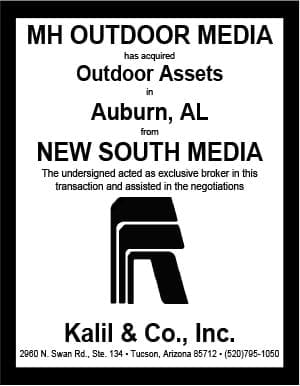
Top OOH salespeople learn lessons from the past in order to propel their future. A good reason to learn about past recession case studies is to understand how they have shaped the ad world we see today.
Detailed local advertising case studies are impossible to find therefore we need to rely on national examples. Don’t deny your advertisers the lessons contained here because they are national companies.
Breakfast Cereals. In the 1930’s depression Post cereal pulled back their advertising to preserve their profit. Simultaneously a little upstart company in Battle Creek Michigan was seizing the opportunity of a quieter marketplace to launch a new product – Kellogg’s Rice Krispies. When a competitor slams on the breaks an advertiser can gain market share, they never give up. Kellogg’s overtook Post as the cereal leader during the depression; a market leadership position that has continued for 9 decades.
Also, in the 1930s most of the 44 auto manufacturers in the US cut back on advertising. One auto maker poured on the steam. They broke out of the pack and started spending more money on advertising. You don’t know most of the names of the other 44 auto makers, but you do know Chevrolet. They got way out in front of their competitors during a time when ad spending was down. Because of this they gained market share they still enjoy today.
Consider Toyota in the 1973 recession. They were tempted to drop their ad budget, but ultimately decided to adhere to their long-term strategy of continued ad spend. Within a couple years they overtook Volkswagen as the top import car maker in the US, a position they own to this day.
In the 1990-1991 recession Pizza Hut/Taco Bell took advantage of McDonalds announced decision to lower their advertising spend. Pizza Hut/Taco Bell poured on advertising and marketing. Pizza Hut sales grew by 61%. Taco Bell sales grew by 40%. McDonalds sales during that time declined 28%.
While Amazon is huge now, during the recession of 2008-2009 they were not nearly the household name they are now. They wanted to innovate, and they used the recession to launch a new product called “Kindle.” Christmas of 2009 was the first time in American history that eBooks outsold printed books because of that launch. Amazon took on the marketplace at a time when ad spend was quieter and won a market position for a key new product.
Many people know the jewelry company DeBeers. They are basically a monopoly when it comes to worldwide diamond sales. In 2008-2009 DeBeers questioned who’s going to buy diamonds during such an economic downturn. Their bold idea was to double their ad spend. They positioned themselves as “here’s to less.” “This Christmas buy fewer gifts, but make them more important gifts. Buy a diamond.” It was a brilliant campaign. While their sales didn’t grow, they did maintain their market share. a share they didn’t later have to spend millions to recapture. No small feat.=
Sony used to average 11% per year growth. In the 2008-2009 recession they cut advertising to maintain profit margins. The years following the recession their sales grew by only 1% per year. They lost market share to Samsung, LG and others and to this day haven’t recovered their share.
Who wants to grow during a recession? I’ll cover some key areas for prospecting in the next installment.
Gain a competitive advantage to sell more OOH Faster by purchasing the Ultimate OOH Sales Guide. 140+ pages of actionable local ideas you can use right now.
Order your hard copy or eBook https://billboardinsider.com/the-ultimate-out-of-home-sales-guide/
[wpforms id=”9787″]
Paid Advertisement

















